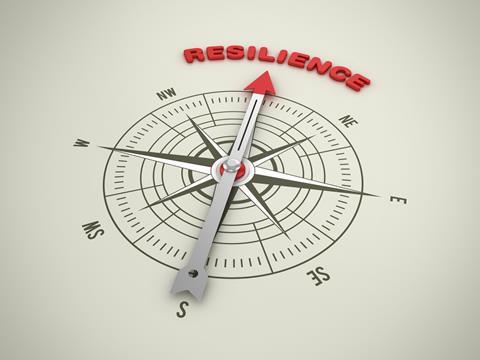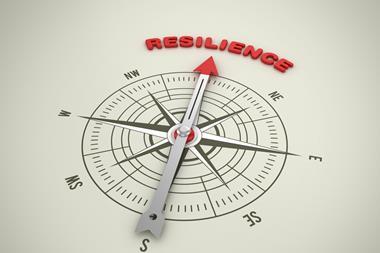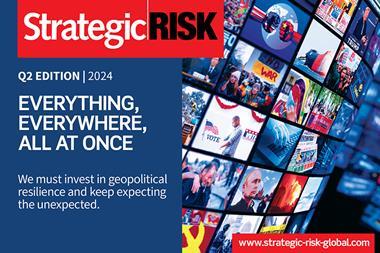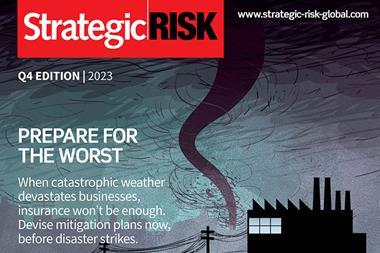In a world besieged by crisis, organisations urgently need to prioritise resilience. Gary Lynam, managing director, EMEA at Protecht, explains how the National Risk Register can help
Given the ubiquitous crises that have characterised world events in the past few years, the need for businesses to anticipate and prepare for unforeseen risks has never been greater.
The UK Government’s National Risk Register (NRR), updated in August 2023, provides a useful strategic foundation tool in this regard, especially given its close links to the government’s internal, classified National Security Risk Assessment.

The NRR’s extensive scope, covering nearly 200 pages and approaching 100 diverse risk scenarios, underlines its value in helping businesses navigate the complex risk landscape, ranging from terrorism and cyber threats to health, societal issues and even natural disasters.
Clearly, there are some important nuances to understand, and the NRR attempts to distinguish between acute risks that require immediate action and chronic risks that call for strategic, long-term approaches.
This differentiation is visualised in a matrix, correlating the impact and likelihood of each risk scenario, providing a basis for understanding the risk spectrum – an essential prerequisite for any organisation focused on informed decision-making.
Moreover, the relevance of the NRR extends beyond government circles, targeting businesses, including SMEs, and focusing on risks that could disrupt business continuity. It’s also important to understand that the NRR is not just a theoretical exercise but a practical guide for organisations to identify, assess and mitigate risks that could impact their operations.
Actionable Steps for Comprehensive Risk Management
For risk managers, therefore, an appreciation of why the NRR matters can act as a foundation for implementing practical and pragmatic steps to address each area of relevance.
In this context, key considerations should include:
- Strategic Risk Assessment: Begin by aligning the NRR’s risk scenarios with your organisation’s objectives and stakeholders. This step involves evaluating risks based on their potential impact and likelihood and determining which are pertinent to your business strategy and operational goals.
- Gap Analysis and Scenario Development: Examine your existing risk register and resilience scenarios for alignment with the NRR. Identify gaps in your risk management framework, especially in scenarios not currently considered. Develop and integrate these scenarios into your operational resilience program, ensuring they encompass preventive measures, business continuity plans and response strategies.
- Actionable Risk Mitigation Strategies: For each identified risk, devise specific actions or investments to modify your risk exposure. This may involve changing operational processes, establishing preventive controls or implementing contingency plans tailored to unique scenarios such as supply chain disruptions.
- Enhancing Resilience through Scenario Testing: Regularly test these scenarios with your team to refine your crisis response capabilities. This practice not only enhances your immediate response to crises but also contributes to an ongoing culture of resilience and preparedness.
- Extended Planning with Strategic Partners: In today’s interconnected business environment, consider the risk profiles of your strategic partners and suppliers. Understand their risk planning and resilience strategies and integrate this knowledge into your overall risk management approach.
- Tailoring Strategies for International Operations: For global businesses, adapt your strategies to reflect different national risk priorities and regulatory landscapes, ensuring that your incident response strategy is both comprehensive and region-specific.
- Regular Review and Adapt: Continuously review and update your risk register, business continuity plans and crisis management simulations to remain agile in a dynamic risk environment.
Innovative Approaches to Risk Mitigation
In addition to these measures, risk managers should also evaluate the role of insurance as a strategic tool in dealing with risk.
For certain scenarios identified in the NRR, especially those that could have a catastrophic impact and where traditional risk mitigation strategies may not be sufficient, insurance can serve as a critical component in a comprehensive risk management plan, providing financial protection against scenarios that are beyond the organisation’s control.
This includes not only traditional insurance policies but also specialised coverage options tailored to specific risks identified in the NRR or beyond.
While insurance is not likely to be available for every risk scenario, it can certainly play a role in helping organisations manage their exposure more effectively, ensuring that they are financially prepared to withstand significant adverse events.
In practical terms, understanding the diverse impact of specific scenarios is crucial for effective risk management. Consider the example of a vessel sinking in a port: the implications and required responses vary significantly based on the stakeholder’s perspective.
For instance, if your organisation owns or manages the ship, the focus might be on immediate crisis response, salvage operations, and liability issues. For the port authority, the emphasis is more likely to be on issues such as port operations, environmental impact and coordinating with various agencies. Suppliers using that route would need to rapidly adjust their logistics and supply chain strategies, while organisations reliant on goods passing through the port would have to activate alternative supply chain plans.
Moreover, such scenarios can also present unique opportunities. A rail provider, for example, could take the chance to offer alternative transportation solutions, adapting quickly to cater to the increased demand.
Herein lies an important point: while the NRR provides a foundational framework, effective risk management demands a tailored approach, carefully analysing each organisation’s unique risk profile.
Through diligent planning, scenario testing and adaptation, businesses can enhance their resilience, better positioning themselves to navigate the complexities of today’s risk landscape.
For today’s risk managers, these are mission-critical considerations given the increasingly challenging risk-based environment and the scope that exists for rapid change.
Gary Lynam, is managing director, EMEA at Protecht



















No comments yet